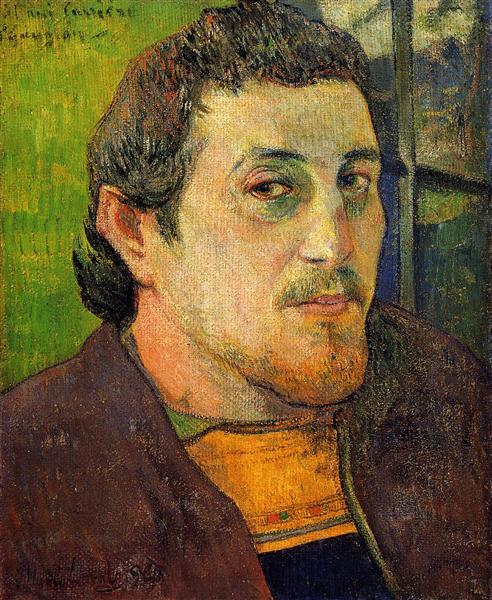Description
In "Self -portrait in Lezaven" of 1888, Paul Gauguin offers a unique and intimate vision that transcends the mere representation of the author. This work, conceived during his stay in Brittany, immerses us in the mind of an artist trapped between the search for his own identity and the desire to challenge his contemporaneity. Gauguin, who had walked along the path of impressionism before becoming a central figure of postimpressionism, uses this self -portrait not only to show himself, but to invite the viewer to share a personal introspection where each brushstroke reveals both his internal conflict and In your environment.
The composition of painting It is fascinating. Gauguin introduces himself with a penetrating look that is both challenging and reflective. His face, framed by a clear contour and simple tones, is loaded with emotional duality. The symmetry in its representation, where the face lines are highlighted by the soft light, contrasts with the diffuse background that barely hints at a Brétan landscape that does not seek to compete in prominence, but serves as a backdrop to its figure. This blurring of what surrounds the protagonist is a deliberate resource that emphasizes loneliness and isolation in which the artist is; This attitude is typical of the symbolism that Gauguin would begin to use more intensely in his career.
In color terms, the palette it uses is bold, dominated by yellow and green tones that evoke both a sense of warmth and melancholy. The almost expressionist of color reinforces the author's emotional state, causing the viewer not only to see the image, but feel the burden of his subjective experience. The brushstrokes are visible and vibrant, using the texture to add a dynamism that contrasts with the almost static environment of the background. This choice reinforces the notion that true life is contained in the intensity of being, instead of around it.
Gauguin is not just a portraitist of himself, but a psychologist of his own psyche and the culture around him. In this self -portrait, he dispensed with superfluous details that often populate the postal art of his time, which reveals a search for essence that was aligned with his growing disappointment towards the naturalism of his contemporaries. The similarities with other works of his time, such as the portraits of Vincent Van Gogh, also reflect this exploration of the interiority, but what distinguishes Gauguin is his ability to merge his psychological concerns with his appreciation for the simplicity of form.
Gauguin's work in this period is particularly significant, since it marks a time when the artist begins to distance himself from the realistic representation in search of a deeper connection with the essence of the subjects he portrays. Although this self -portrait shows us Gauguin's face, it is at the same time a mirror of his restless soul, a testimony of the complex identity of a man who is defined by his artistic and spiritual search, far from the influences of his time.
Therefore, "self -portrait in Lezave" is not merely a painting; It becomes an emotional codex that communicates Gauguin's internal climate at a point of his life where uncertainty and self -exploration are intertwined. It is at this intersection where the true value of art is found: not only in the physical representation of the subject, but in the invitation to see beyond the surface, to discover the soul that unfolds in the unique voice that, through The painting continues to resonate over time.
KUADROS ©, a famous paint on your wall.
Hand-made oil painting reproductions, with the quality of professional artists and the distinctive seal of KUADROS ©.
Reproduction service paintings With a guarantee of satisfaction. If you are not completely satisfied with the replica of your painting, we refund your money 100%.

